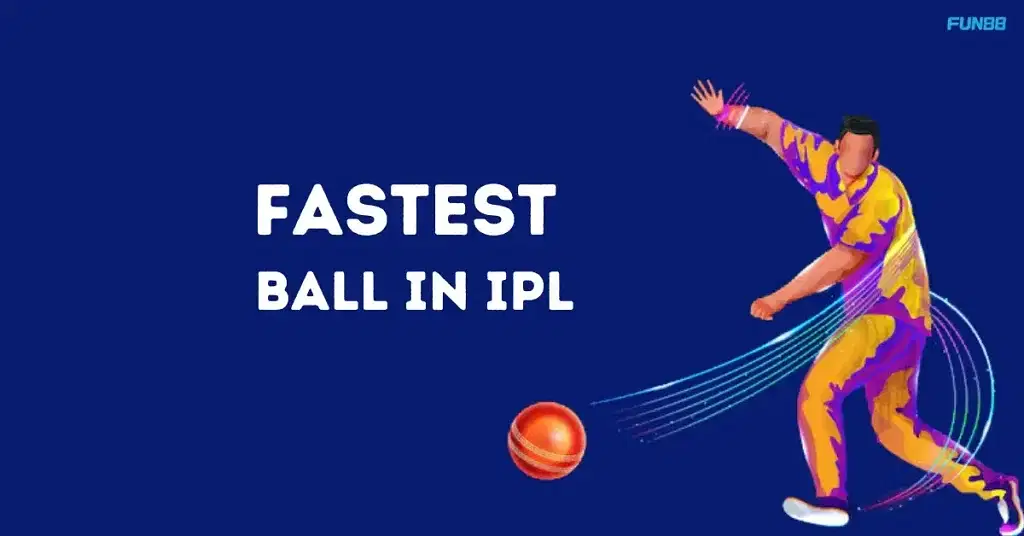The Indian Premier League (IPL) is known for its thrilling cricketing action, where the tussle between batters and bowlers brings heart-pumping experiences. Although the game is dominated by batters, good bowling always changes the scene within the course of a few balls. Additionally, a bullet-speed delivery leaves the batter in awe and spectators in delight. Among the highlights of any IPL season is the pace that fast bowlers bring to the game, leaving fans and opponents stunned.
The adrenaline rush of seeing a bowler charging in to unleash a delivery at lightning speed is unmatched. Over the years, the Indian Premier League has witnessed some of the fastest balls in cricket history, defining moments that captivate audiences and challenge even the most seasoned batters.
This post will explore the top 10 fastest balls in IPL history, highlighting the bowlers who have etched their names into the league’s record books with their blistering pace.
Top Fastest Balls Recorded in IPL History (2008-2024)
The Indian Premier League (IPL) has always been a stage for breathtaking performances and thrilling cricketing moments, and the art of fast bowling holds a special place in this arena. Bowling at blistering speeds disrupts batters and creates captivating spectacles for fans worldwide.
Here, we delve into the top record-breaking deliveries bowled in the IPL, highlighting these fast bowlers’ extraordinary speed and precision.
| Sr. No | Bowler Name | Nationality | Speed | Year |
| 1 | Shaun Tait | Australia | 157.71 kmph | 2011 |
| 2 | Lockie Ferguson | New Zealand | 157.3 kmph | 2022 |
| 3 | Umran Malik | India | 157 kmph | 2022 |
| 4 | Anrich Nortje | South Africa | 156.22 kmph | 2020 |
| 5 | Umran Malik | India | 156 kmph | 2022 |
| 6 | Anrich Nortje | South Africa | 155.1 kmph | 2020 |
| 7 | Umran Malik | India | 154.8 kmph | 2022 |
| 8 | Anrich Nortje | South Africa | 154.7 kmph | 2020 |
| 9 | Dale Steyn | South Africa | 154.4 kmph | 2012 |
| 10 | Kagiso Rabada | South Africa | 154.23 kmph | 2020 |
1. Shaun Tait: 157.71 kmph, 2011

Shaun Tait, an Australian fast bowler renowned for his terrifying pace, holds the record for the fastest ball in IPL history, clocking in at 157.71 kmph. This stunning delivery was bowled during the 2011 season while he was representing the Rajasthan Royals against the Delhi Daredevils, now known as the Delhi Capitals.
Despite frequent injuries, Tait enjoyed a respectable IPL career, taking 23 wickets in 21 matches between 2010 and 2013. His record-breaking delivery remains unsurpassed, showcasing his ability to generate incredible speed consistently.
2. Lockie Ferguson: 157.3 kmph, 2022
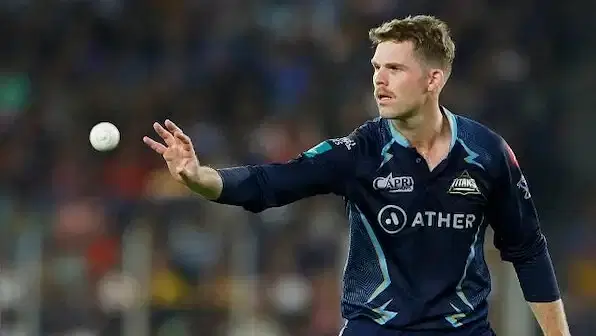
One of New Zealand’s premier fast bowlers, Lockie Ferguson, delivered the second-fastest ball in IPL history during the 2022 season. In a thrilling encounter representing Sunrisers Hyderabad against the Rajasthan Royals, Ferguson’s fierce pace reached 157.3 kmph, demonstrating his well-known ability to deliver “searing pace and lethal bouncers.”
His performance in the IPL match underscored Ferguson’s reputation as one of the quickest and most formidable bowlers in the current cricketing landscape.
3. Umran Malik: 157 kmph, 2022
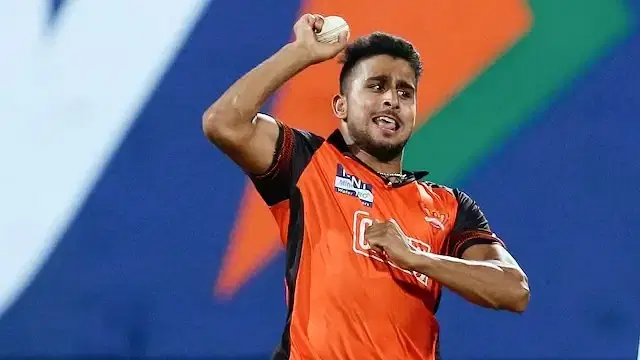
Emerging as one of India’s fastest bowlers, Umran Malik bowled a delivery clocked at 157 kmph in the 2022 IPL season. Playing for Sunrisers Hyderabad, Malik showcased his potential in a match against the Delhi Capitals, marking the third-fastest ball ever recorded in IPL history.
His remarkable ability to bowl consistently at high speeds has made him a rising star in Indian cricket. Shortly after that, he made his debut in international T20 cricket.
4. Anrich Nortje: 156.22 kmph, 2020
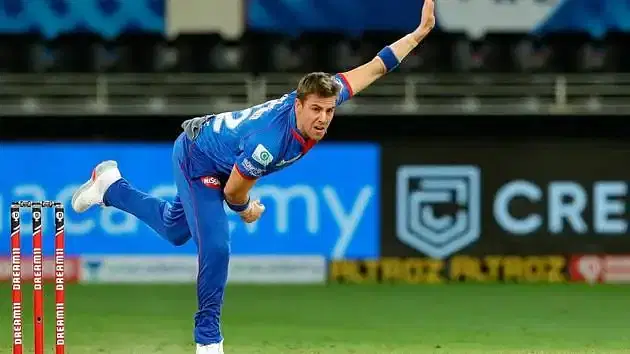
Anrich Nortje, the South African pace sensation, bowled a delivery at 156.22 kmph during the 2020 IPL season, securing the fourth spot on the list. Playing for the Delhi Capitals, Nortje unleashed his speed against the Rajasthan Royals in a memorable display of fast bowling. This incredible delivery helped consolidate his position as a critical Delhi Capitals player. It highlighted his ability to combine speed and skill effectively.
5. Umran Malik: 156 kmph, 2022
Adding another entry to the top 10 list, Umran Malik delivered a blistering 156 kmph ball during the 2022 season against the Delhi Capitals. Malik’s inclusion multiple times on this list demonstrates his exceptional capability to maintain high speeds, and he is quickly becoming a prominent player in the fast-bowling sphere in the IPL and beyond.
6. Anrich Nortje: 155.1 kmph, 2020
With another entry, Anrich Nortje recorded the sixth-fastest delivery in IPL history at 155.1 kmph in 2020. His performance for the Delhi Capitals against the Rajasthan Royals was marked by his ability to trouble batters consistently with his pace. This speed reinforced his position as an asset to any team, illustrating his prowess as a fast bowler in T20 cricket.
7. Umran Malik: 154.8 kmph, 2022
In the same season, Umran Malik showcased his speed by bowling a delivery at 154.8 kmph against the Delhi Capitals. His outstanding pace and control have made him a critical asset for Sunrisers Hyderabad, and his rapid rise points to a promising future in international cricket.
8. Anrich Nortje: 154.7 kmph, 2020
Nortje is once more on this list. His delivery time of 154.7 kmph during the 2020 IPL season solidified his standing as a crucial figure for the Delhi Capitals. His consistent high-speed bowling makes him one of the most exciting bowlers, providing formidable challenges for opposing batters.
9. Dale Steyn: 154.4 kmph, 2012
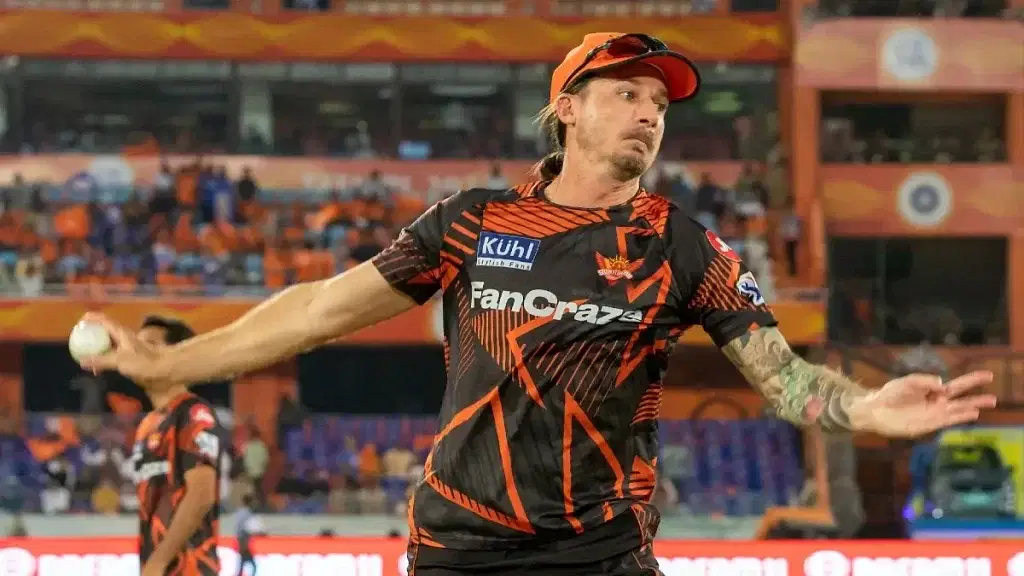
Legendary South African fast bowler Dale Steyn bowled a delivery recorded at 154.4 kmph while playing for the Deccan Chargers in 2012. Known for his fiery and accurate bowling, Steyn was a cornerstone of pace attacks in the IPL, and his skills continue to be revered and remembered as part of the league’s impressive fast-bowling lineage.
10. Kagiso Rabada: 154.23 kmph, 2020
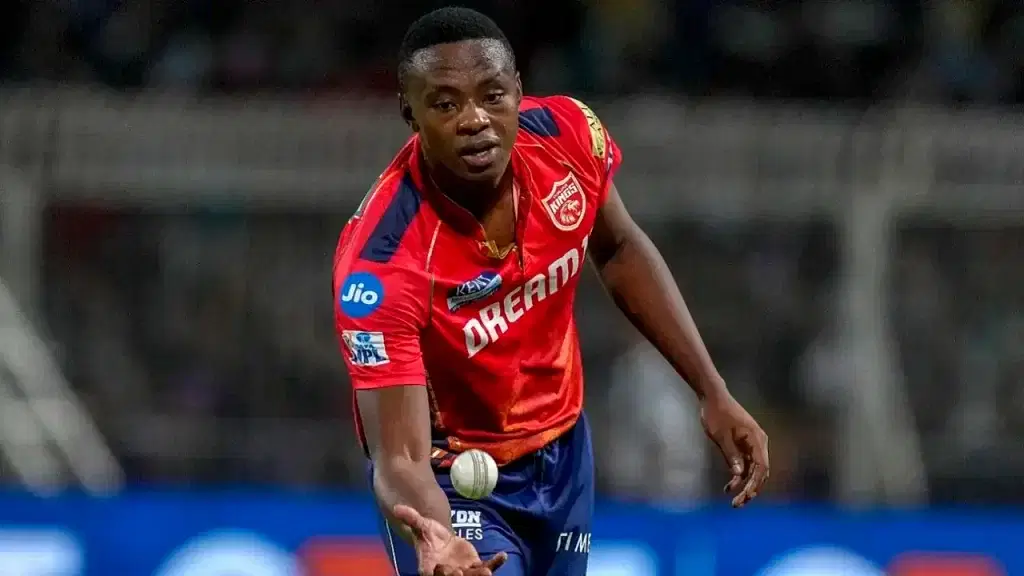
Completing this list is Kagiso Rabada, another talented South African fast bowler who delivered at a pace of 154.23 kmph during the 2020 season for the Delhi Capitals. Known for his reliable high-speed deliveries, Rabada has been instrumental in his team’s successes and is firmly established as one of the premier fast bowlers in the IPL.
Related Read: Top 10 Highest Team Scores in IPL (2008-2024)
Factors Contributing to Fast Bowling Performance
Fast bowling in cricket is a blend of skill, physique, and mental fortitude, producing some of the most thrilling moments in the sport. Several factors contribute to the performance of fast bowlers, making them formidable forces on the field.
1. Physical Attributes and Fitness
A fast bowler’s physique is one of the major factors in generating speed and maintaining it over spells. Strength and conditioning programs focus on developing the lower body for explosive power and the upper body for arm speed and endurance.
Core strength is pivotal in maintaining balance and facilitating the twisting motion required for effective delivery. Moreover, flexibility is crucial to minimising injury risks and ensuring efficient energy transfer from run-up to ball release.
2. Technique and Mechanics
Proper bowling mechanics are fundamental, ensuring that energy is optimally transferred from the bowler’s approach to the point of release. This involves aligning the body correctly during delivery, using the non-bowling arm for balance, and timing the release for maximum speed. Coaches work with bowlers to refine their actions, focusing on seam position, wrist alignment, and follow-through, contributing to speed and accuracy.
3. Training and Adaptation
Fast bowlers undergo specific training regimes, including sprinting, resistance training, and specialised drills to enhance their speed and stamina. Mental conditioning, including focus and pressure management, is integral to handling the psychological demands of competitive bowling. Adaptability is another crucial trait; bowlers must adjust their techniques according to different pitch conditions, weather, and opposition strategies.
4. Equipment and Technology
Advancements in sports technology have significantly impacted fast bowling. Modern footwear with improved traction and comfort lets bowlers maintain their pace and agility during the run-up.
Additionally, biomechanical analysis tools allow for detailed assessments of bowling actions, helping athletes and coaches identify areas for improvement and reducing the risk of injury through corrective training.
5. Mental Resilience
Fast bowling can be mentally draining, especially under pressure. Developing mental resilience is as crucial as physical training. Bowlers are often trained to cultivate focus, handle on-field sledging, and maintain composure after a poor over or dropped catch. Strategies like visualisation, meditation, and sports psychology sessions can enhance a bowler’s mental game.
Also Read: Which IPL Team Has Most Fan Following?
Impact of Fast Bowling on Match Outcomes
Fast bowling profoundly impacts cricket matches, often deciding in close contests. This bowling style brings several strengths to a team, influencing match outcomes in various significant ways.
1. Creating Pressure on Batsmen
One of the primary impacts of fast bowling is its ability to intimidate and pressure batters. With their aggressive pace, fast bowlers can unsettle opponents, leading to mistakes or preemptive moves that result in wickets. Strategic short-pitched deliveries and bouncers force batters onto the back foot, disrupting their timing and confidence. This psychological edge is crucial, especially in limited-overs cricket, where run-scoring is vital.
2. Early Breakthroughs
Fast bowlers are particularly effective in providing early breakthroughs, which are crucial in setting the tone for the innings. An initial burst of pace can result in quick wickets, applying immense pressure on the opposing team’s batting lineup. Dismissing top-order batters early can significantly demoralise an opponent, forcing middle-order players to focus on rebuilding rather than capitalising on batting powerplays.
3. Middle and Death Over Control
Fast bowlers often control critical phases of a match, particularly in the middle and death overs. Their ability to reverse swing the ball and deliver effective yorkers or slower balls makes them invaluable for containing runs and taking wickets at key moments. A tight spell or a series of quick wickets during these overs can shift the momentum drastically, often deciding the match outcome.
4. Impact on Strategies and Team Composition
The presence of a robust and fast bowling lineup dictates team strategy and opposition planning. Teams with exceptional fast bowlers can opt to implement aggressive field placements, knowing their bowlers can exploit any weaknesses in the batting side. Moreover, this increasing reliance on pace attack can shape team composition, influencing the selectors’ choices on the balance between batters and bowlers.
5. Enhancing Entertainment and Viewership
Fast bowling impacts the technical aspects of a game and enhances the spectacle, drawing increased viewer engagement and interest. The thrill of witnessing a fast bowler deliver at high speeds adds an electrifying element to the match experience, making it compelling for fans and enhancing the commercial value of the sport.
Also Read: Who is the Baap of IPL?
Trends in Fast Bowling Over the Years
Fast bowling in cricket has evolved significantly, mirroring broader shifts in the game’s demands and technology. Speed alone was the hallmark of a successful fast bowler in the early years. Over time, the focus expanded to precision, swing, and variety. The 1970s and 1980s saw pioneering fast bowlers like Dennis Lillee and Malcolm Marshall, who combined raw pace with strategic thinking, setting new benchmarks for bowling performance.
The advent of T20 cricket, including leagues like the IPL, brought a renewed emphasis on pace and innovation. Bowlers began incorporating slower balls and reverse swing variations to outsmart batters in shorter formats. Advanced training techniques and biomechanical analysis have further refined bowling techniques, helping athletes achieve previously unattainable bowling speeds with greater consistency and reduced risk of injury.
Modern fast bowlers like Jasprit Bumrah and Pat Cummins continue to push the boundaries, using data-driven strategies to hone their skills. They blend blistering pace with intricate variations and tactical nous, making fast bowling a cornerstone of any successful cricket team strategy.
Also Read: How to Swing a Cricket Ball Like a Pro: Step-by-Step Guide
Conclusion
The progression of fast bowling underscores the sport’s broader evolution, demonstrating how technology and strategy now go hand-in-hand to enhance performance. As the game has evolved, so too have the requirements and skills of pacers. Bowlers are expected to bowl strategically with a deep understanding of pitch conditions and opposition weaknesses.
Frequently Asked Questions (FAQs)
The record for the fastest ball ever bowled in the IPL belongs to Shaun Tait, who delivered a ball at a speed of 157.71 kmph in 2011 while playing for the Rajasthan Royals.
Rapid deliveries often lead to early breakthroughs, removing key top-order batters and applying pressure on the opposing team. In death overs, fast bowlers use their pace and skill to contain scoring and execute critical yorkers, influencing the outcome of close matches.
In the IPL, fast bowling has increasingly emphasised speed and versatility. Bowlers now regularly reach and exceed speeds of 150 kmph, reflecting heightened fitness and rigorous training regimes. Innovations like slower balls and knuckleballs have become common as bowlers adapt to varying pitch conditions and batting styles.
Star it if you find it helpful.
